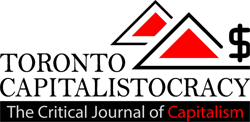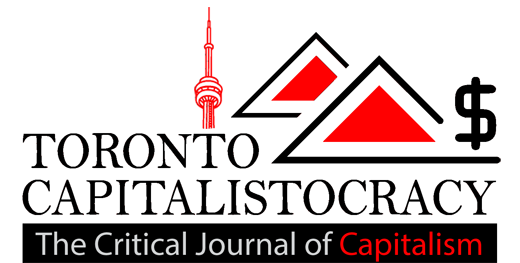Headline News
The Coronavirus Crisis Exposes How Fragile Capitalism Already Was

When this is all over, will we be able to patch up the economy and get things back to normal? Trump certainly claims so. But he’s wrong.
Weak attempts to patch up the problems of capitalism—as much as the coronavirus itself—are what got us into the current economic meltdown in the first place.
Let’s define some terms. When we talk about the health of the economy, there are two parts: the “real economy,” which includes all the goods and services that we produce, and the “financial economy”: money, stock markets, banks, and credit.
The coronavirus has affected the economy in stages:
First, we saw the impact on the real economy as the spread of the virus in China led to slowed production in January 2020. China shut down factories across the country to prevent the spread. Suddenly all kinds of products were not being manufactured, and other countries that buy from China saw the ripple effect. Apple began moving some production from China to other countries. Ford and Toyota shut down some plants. FedEx and UPS changed some delivery routes.
Next, we saw the delayed impact on the stock market. That did not happen right away, as some politicians (like President Trump) asserted that the virus was under control. The stock market continued to flourish through February.
But stock markets operate based on prediction, and investors were soon weighing the virus’s effect on production and consumption against the likelihood of government bailouts. From late February to the end of March, the Dow Jones recorded its worst first quarter performance since 1987.
By March, we began to see the impact on the real economy in much of the rest of the world, beyond China. Businesses stopped production or stopped providing services; restaurants closed; dry cleaners closed. A few industries did more business, such as pharmacies and grocery stores. But for the most part, huge numbers of people lost their jobs or lost hours. By April this had spread to much of the world.
The stock markets kept fluctuating as investors waited to hear the size and nature of government stimulus packages. When Congress passed a large stimulus in mid-March, the stock market rebounded for a bit, but then dropped again once unemployment numbers were released. We are likely to see continued fluctuations in the months ahead as the world adjusts to the realities of coronavirus.
DYSFUNCTION ISN’T NEW
The pandemic is exposing just how dysfunctional our economic system was to begin with. Capitalism is ideologically based on the principles of individualism and competition, but it becomes completely clear in a pandemic that what’s needed is solidarity: collective solutions that help everyone.
For example, if we assume profit should guide health care decisions, millions of people won’t be able to afford treatment, or even testing, and the virus will just continue to spread. The market solution would let rich people buy ventilators for themselves, just in case, while hospitals need them. So far, the U.S. has made no promises that a vaccine will be free or affordable.
In addition, the pandemic has exposed weaknesses that were already there in our economy. The real economy has been struggling since the 2008 crash. The virus didn’t cause the stock markets to falter in February: it was only a trigger. You could say that the real economy was already immune-compromised and had little ability to withstand disruption.
One possible path out of the 2008 crash would have been for governments to try “managed capitalism,” where governments make long-term plans to build and support certain industries, such as “green production”; invest in those industries; put money into rebuilding infrastructure; and regulate what investors can and cannot do (such as making corporations pay taxes so that some of their profit is used for public goods like schools rather than for speculative investing), so the economy is not so vulnerable to bubbles and recessions. That didn’t happen.
But it is not even clear whether that path would have worked. In fact, economic growth in most of the rich countries slowed in the 1970s and has never recovered since then. And even where we have seen some growth, such as a steady and strong growth in productivity, it has not brought about an increase in the standard of living for the average worker.

Headline News
How Canadian churches are helping their communities cope with the wildfires

As wildfires burn across Canada, churches are finding ways to support their members and the broader community directly impacted by the crisis.
According to the Canadian Interagency Forest Fire Centre, as of June 13, there are 462 active fires across Canada – and 236 of them classified as out of control fires.
Whether it’s through phone calls or donations to community members, here’s how a few churches across Canada are handling active wildfires and the aftermath in their regions.
Westwood Hills, N.S.: St. Nicholas Anglican Church
In Nova Scotia, St. Nicholas Anglican Church and other churches in the area are collecting money for grocery cards to give to families impacted by the Tantallon wildfire.
Right outside of Halifax, N.S., the Tantallon wildfire destroyed 151 homes. More than 16,000 people evacuated the area due to the fire.
The fire is now considered contained, but Tanya Moxley, the treasurer at St. Nicholas is organizing efforts to get grocery gift cards into the hands of impacted families.
As of June 12, four churches in the area – St. Nicholas, Parish of French Village, St Margaret of Scotland and St John the Evangelist – raised nearly $3,500. The money will be split for families’ groceries between five schools in the area impacted by the wildfire.
Moxley said she felt driven to raise this money after she heard the principal of her child’s school was using his own money to buy groceries for impacted families in their area.
“[For] most of those people who were evacuated, the power was off in their subdivision for three, four or five days,” she said. “Even though they went home and their house was still standing, the power was off and they lost all their groceries.”
Moxley said many people in the area are still “reeling” from the fires. She said the church has an important role to help community members during this time.
“We’re called to feed the hungry and clothe the naked and house the homeless and all that stuff, right? So this is it. This is like where the rubber hits the road.”

Headline News
Is it ever OK to steal from a grocery store?

Mythologized in the legend of Robin Hood and lyricized in Les Misérables, it’s a debate as old as time: is it ever permissible to steal food? And if so, under what conditions? Now, amid Canada’s affordability crisis, the dilemma has extended beyond theatrical debate and into grocery stores.
Although the idea that theft is wrong is both a legally enshrined and socially accepted norm, the price of groceries can also feel criminally high to some — industry data shows that grocery stores can lose between $2,000 and $5,000 a week on average from theft. According to Statistics Canada, most grocery item price increases surged by double digits between 2021 and 2022. To no one’s surprise, grocery store theft is reportedly on the rise as a result. And if recent coverage of the issue rings true, some Canadians don’t feel bad about shoplifting. But should they?
Kieran Oberman, an associate professor of philosophy at the London School of Economics and Political Science in the United Kingdom, coined the term “re-distributive theft” in his 2012 paper “Is Theft Wrong?” In simplest terms, redistributive theft is based on the idea that people with too little could ethically take from those who have too much.
“Everybody, when they think about it, accepts that theft is sometimes permissible if you make the case extreme enough,” Oberman tells me over Zoom. “The question is, when exactly is it permissible?”
Almost no one, Oberman argues, believes the current distribution of wealth across the world is just. We have an inkling that theft is bad, but that inequality is too. As more and more Canadians feel the pinch of inflation, grocery store heirs accumulate riches — Loblaw chair and president Galen Weston, for instance, received a 55 percent boost in compensation in 2022, taking in around $8.4 million for the year. Should someone struggling with rising prices feel guilty when they, say, “forget” to scan a bundle of zucchini?

Headline News
The homeless refugee crisis in Toronto illustrates Canada’s broken promises

UPDATE 07/18/2023: A coalition of groups arranged a bus to relocate refugees to temporarily stay at a North York church on Monday evening, according to CBC, CP24 and Toronto Star reports.
Canadians live in a time of threadbare morality. Nowhere is this more obvious than in Toronto’s entertainment district, where partygoers delight in spending disposable income while skirting refugees sleeping on sidewalks. The growing pile of luggage at the downtown corner of Peter and Richmond streets resembles the lost baggage section at Pearson airport but is the broken-hearted terminus at the centre of a cruel city.
At the crux of a refugee funding war between the municipal and federal governments are those who have fled persecution for the promise of Canada’s protection. Until June 1, asylum seekers used to arrive at the airport and be sent to Toronto’s Streets to Homes Referral Assessment Centre at 129 Peter St. in search of shelter beds. Now, Toronto’s overcrowded shelter system is closed to these newcomers, so they sleep on the street.
New mayor Olivia Chow pushed the federal government Wednesday for at least $160 million to cope with the surge of refugees in the shelter system. She rightly highlights that refugees are a federal responsibility. In response, the department of Immigration, Refugees, and Citizenship Canada points to hundreds of millions in dollars already allocated to cities across Canada through the Interim Housing Assistance Program, while Ontario says it has given nearly $100 million to organizations that support refugees. But these efforts are simply not enough to deliver on Canada’s benevolent promise to the world’s most vulnerable.
The lack of federal generosity and finger-pointing by the city has orchestrated a moral crisis. It’s reminiscent of the crisis south of the border, where Texas governor Greg Abbott keeps bussing migrants to cities located in northern Democratic states. Without the necessary resources, information, and sometimes the language skills needed to navigate the bureaucratic mazes, those who fled turbulent homelands for Canada have become political pawns.
But Torontonians haven’t always been this callous.
In Ireland Park, at Lake Ontario’s edge, five statues of gaunt and grateful refugees gaze at their new home: Toronto circa 1847. These statues honour a time when Toronto, with a population of only 20,000 people, welcomed 38,500 famine-stricken migrants from Ireland. It paralleled the “Come From Away” event of 9/11 in Gander, N.L., where the population doubled overnight, and the people discovered there was indeed more than enough for all. It was a time when the city lived up to its moniker as “Toronto, The Good.”
Now, as a wealthy city of three million people, the city’s residents are tasked with supporting far fewer newcomers. Can we not recognize the absurdity in claiming scarcity?




